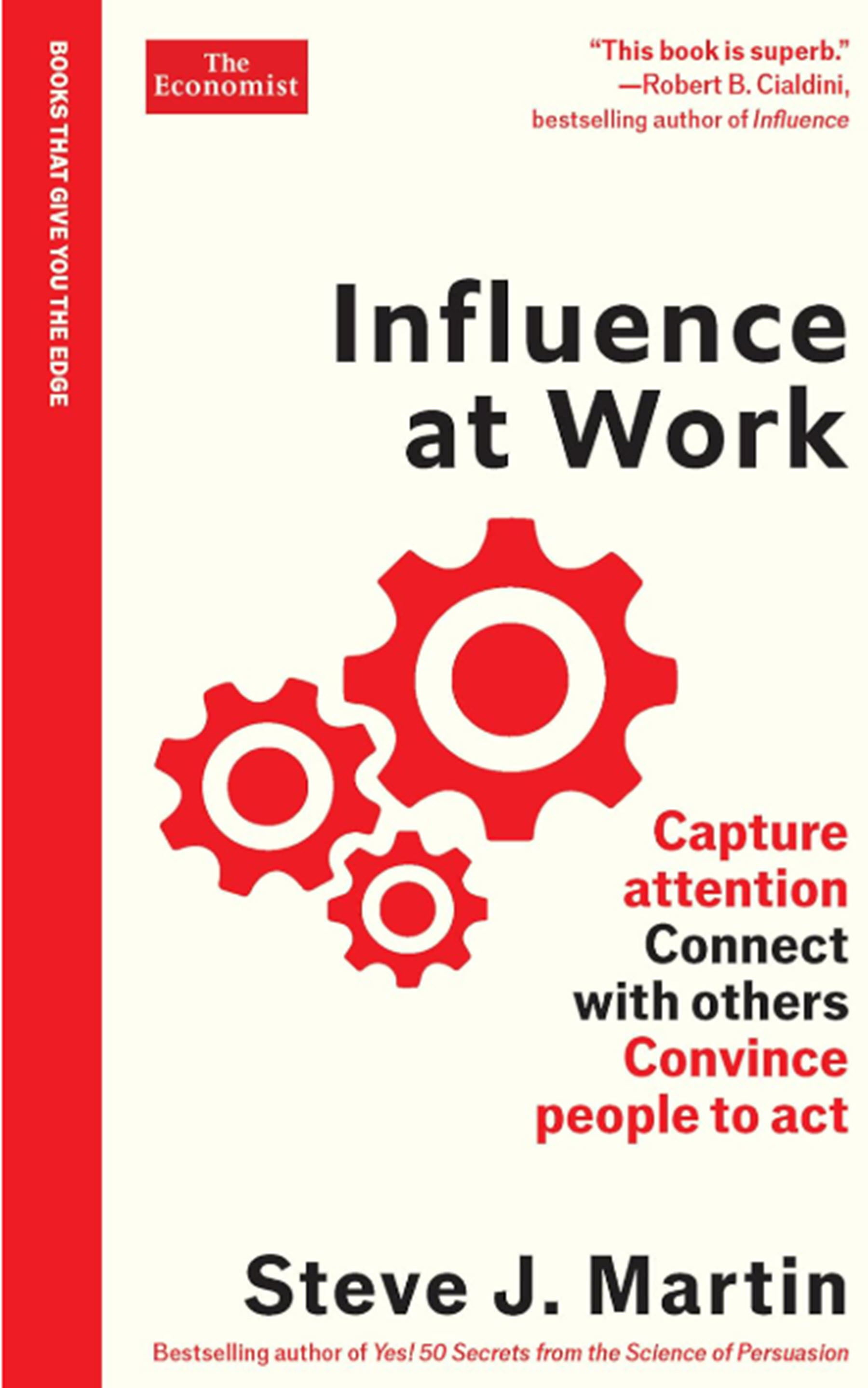Influence at Work: Capture Attention, Connect with Others, Convince People to Act, by Steve J. Martin. New York City: The Economist Books, an imprint of Pegasus Books, 2024; 256 pages, $27.95.
“Clothes make the man. Naked people have little or no influence on society.” – Mark Twain
Twain’s typically wry quip was, if a comment on anything at all, likely an attempt to skewer the “clothes make the man” cliche. But it also works because there is an obvious truth at its center, and that truth could just as easily be applied to ideas or plans: No matter how good, you must dress them up in something because naked ones aren’t likely to have much influence either. That notion is explored in depth in Influence at Work.
Further reading:
- Book offers advice on difficult conversations at work
- Want a thriving workplace? Eliminate generational divide, authors advise
- Want to sharpen your decision-making skills? Authors offer smart path
“The odds of us accomplishing our goals and objectives will frequently be determined by our ability to influence and persuade (others),” writes Steve J. Martin in introducing the book. That concept can – understandably, to an extent – be infuriating to those who think that simply having the best ideas supported by the best evidence should always be enough. But as Martin explains, wishing that were so does not make it so. “To be successful at work you have to be influential at work, which requires an understanding of how the rules of influence work. … Understanding and navigating these rules of influence is crucial to your persuasive success.”
We all know persuasive people, at work or in other parts of our lives. Some of them may have seemingly always had that “superpower.” But Martin’s book, and indeed a chunk of behavioral science itself, argues that, “Some people are naturally blessed with more than their fair share of persuasive powers. … (But) influence is a skill that can be learned and mastered.”
Like a magician patiently explaining that virtually anyone willing to learn and practice can master a few simple tricks, Martin spends the 200 or so economically written pages of Influence at Work explaining how any of us can learn to be more persuasive and wield more influence. The book is neatly divided into three sections of three chapters each.
The first kicks off with a link to a quiz about your current approach to influence, and the chapters explore what influence is (and isn’t) and how people use it. You know influence and persuasion are powerful tools already; think of this as looking under the hood at why they work.
The book’s middle section is called “The Influence Equation” and explores three key factors: evidence, economics, and emotion. Martin discusses how to deploy each of them (“dress them up,” if you will) more effectively. And the final section, appropriate for a book pitching itself as a way to get ahead at work, focuses on how to do so responsibly – the three chapters address the principles, practice, and ethics of using influence.
 The Economist Books
The Economist BooksMartin is certainly an influential mind regarding the subject of influence, having co-authored several previous books dealing with other topics related to persuasion. He also serves as Columbia University’s Columbia Business School faculty director of behavioral science and chairs the Global Association of Applied Behavioural Scientists, a professional association for the field founded in 2020.
Accessibly written and fascinating in its analysis of and coaching on how persuasion works in everyday contexts, Influence at Work is instantly applicable to readers’ work (and elsewhere – such as trying to make sense of why certain people wield so much political influence). It’s arguably worth a read for just about anyone – but maybe especially for anyone whose “nakedly brilliant” ideas don’t seem to be getting them anywhere.



